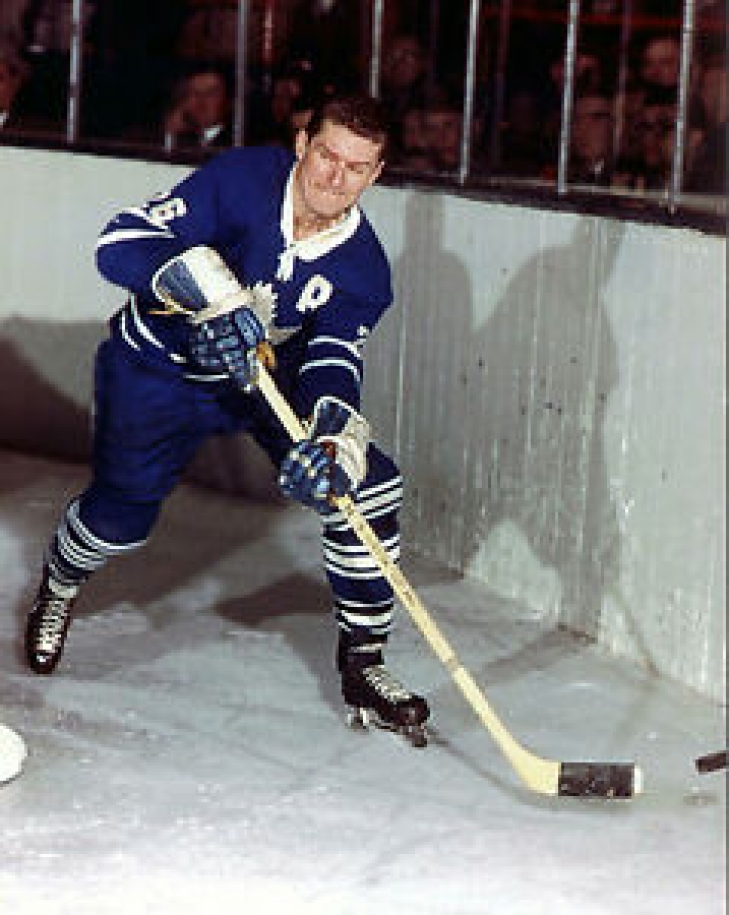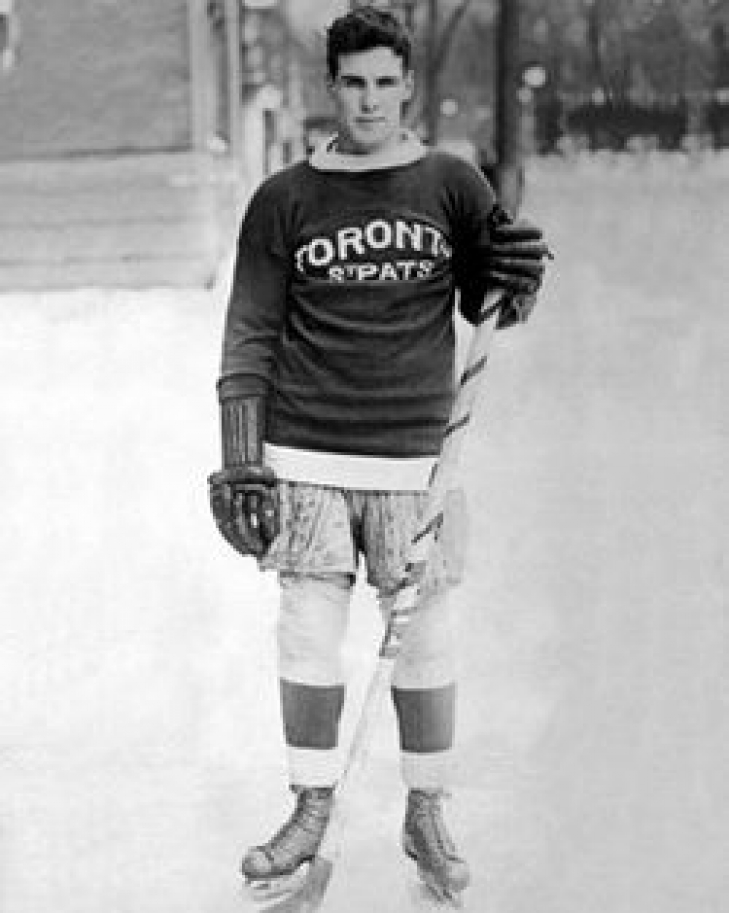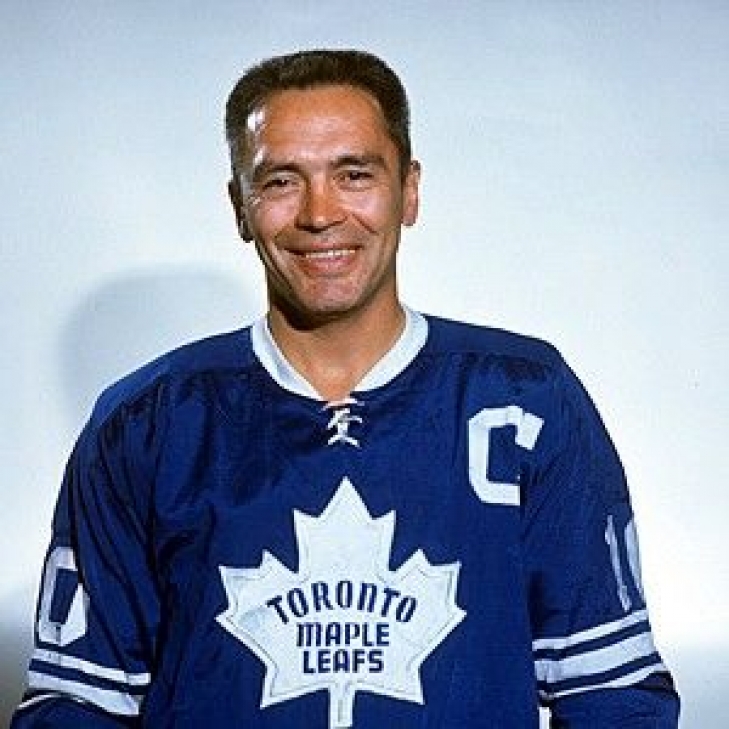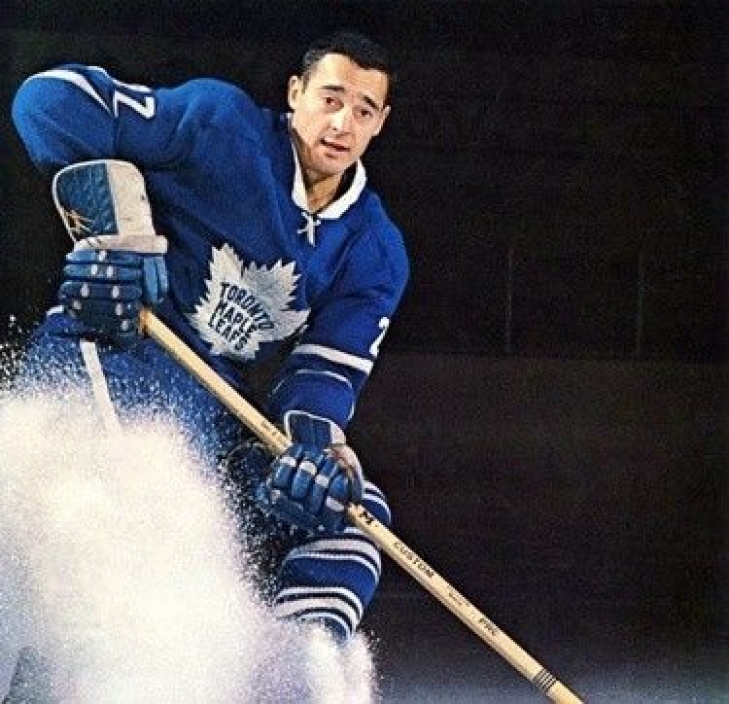
Committee Chairman
17. Allan Stanley
The first half of Allan Stanley's career was decent, but it wasn't spectacular. The Defenseman played for New York (1948-54), Chicago (1954-56), and Boston (1946-58), and while he was good, he was approaching 30, and hockey pundits thought they knew what Stanley was, but a trade to the Toronto Maple Leafs placed him in the best light possible.
Stanley was a slow and plodding skater (so much so that he was called "snowshoes"), but he was a master of positioning and an expert passer, which made him an asset on the power play. Stanley's true strength was as a lockdown defender, and he was a massive part of the Maple Leafs’ success in the 1960s, winning four Stanley Cups. Individually, Stanley was a three-time Second Team All-Star and was the runner-up for the Norris Trophy in 1959-60.
In 1968, Stanley was claimed by the Philadelphia Flyers, where he played one year before retiring.
Stanley was inducted into the Hockey Hall of Fame in 1981.
16. Babe Dye
One of the most prolific Canadian athletes of the 1920s was Cecil "Babe" Dye, who, in addition to hockey, played football for the Toronto Argonauts and was a very good minor league baseball player. Dye was at his best in hockey, of which the then-named Toronto St. Patricks was the beneficiary of.
Dye signed with Toronto in 1919, and in his second season, he led the NHL in Goals. Two seasons later, Dye led the St. Patricks to a Stanley Cup while again leading the NHL in Goals (31) while doing so again the following season (27). Dye became the first player to lead the NHL in Goals four times when his career-high 38 led the league in 1924-25.
As athletic as the forward was, Dye was not a great skater and relied on an incredible shot and unequaled stickhandling. There were few players in his era or any other era, who could score but couldn't playmake, but goals are the arbiter of wins.
Dye’s play plummeted after that season, and he was traded a year later. He returned to play six final games in the NHL to Toronto in 1930-31. With the Maple Leafs, Dye had a phenomenal 1.24 Points per Game Average and put the puck in the net 175 times in 177 Games.
Dye entered the Hockey Hall of Fame in 1970.
15. George Armstrong
Known as “Chief” due to his Algonquin heritage, George Armstrong would become the most tenured Toronto Maple Leaf of all time, participating in 1,188 Games.
Armstrong first appeared in a Leafs uniform in the 1949-50 Season, and was a stalwart at Right Wing two years later. While he was not a gifted skater, he had a high hockey IQ, expert positioning and rarely lost a grind in the corner.
Armstrong was not a potent scorer but was the most consistent player for a 15-year period. His career-high in Points was only 53 (1961-62), but he cracked the 40-Point mark seven times, and he was very good on the defensive side of the ice. Armstrong became the team captain in 1957 and held that post for twelve seasons, overseeing four Stanley Cups, arguably making him the most successful Maple Leaf to don the "C."
Retiring after the 1970-71 Season, Armstrong scored 726 Points and remains one of the most respected players in franchise history.
Armstrong was chosen for the Hockey Hall of Fame in 1975, and the Leafs hung his likeness to the rafters of the Air Canada Center in 1998. His number 10 (along with Syl Apps) was retired in 2016.
14. Frank Mahovlich
Frank Mahovlich entered the NHL with lofty expectations, and he delivered immediately, winning the Calder Trophy as the best rookie in the 1956-57 Season.
The “Big M” built on his skills, becoming one of Toronto’s top offensive threat in the 1960s. In the 1960-61 campaign, Mahovlich scored 84 Points, which would be a personal best in Toronto, and he led the league in Even Strength Goals (41). Mahovlich was named a First Team All-Star that year, and he would help lead the Maple Leafs to the first of three straight Stanley Cup wins.
After his first Cup, Mahovlich was named a First Team All-Star in 1963 and had Second Team honors in 1962, 1964, 1965 & 1966. The Left Wing again helped them win another Cup in 1967. This added up to a substantial amount of success, but management would sour on the star like so many Leafs.
For Mahovlich, Punch Imlach, Toronto’s Head Coach and Executive, was the bane of his existence. Imlach constantly berated Mahovlich, who in modern terms suffered severe mental health issues because of it. Allegedly, the two did not speak for the last five years of his time in Toronto, which ended in a trade to the Detroit Red Wings in March of 1968.
Mahovlich would later win two more Stanley Cups with the Montreal Canadiens, but he was always best known for his time as a Maple Leaf despite the issues with Toronto. With the Leafs, Mahovlich scored 597 Points in 720 Games.
Mahovlich entered the Hockey Hall of Fame in 1981, and he had a banner raised in 2001. His number 27 (along with Darryl Sittler) was retired by the organization in 2016.





